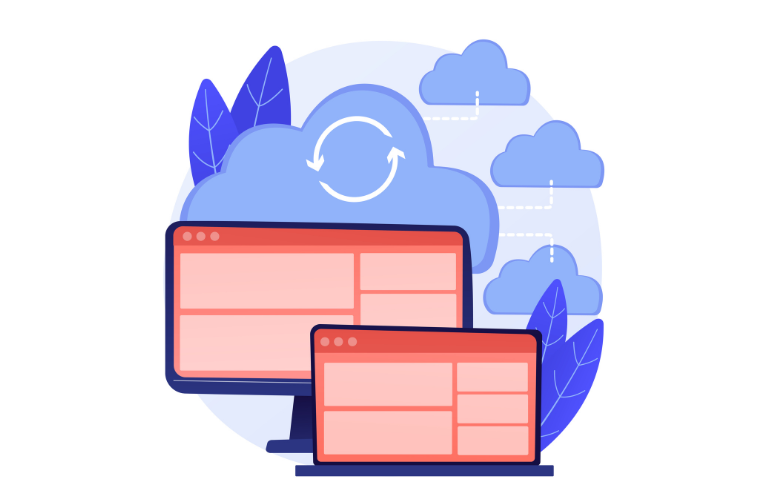What is NativePHP? If you’re a PHP or Laravel developer looking to create desktop or mobile apps without learning complex new frameworks, NativePHP is your answer. Launched in April 2023 and reaching its stable v1.0.0 release in April 2025, NativePHP empowers developers to transform Laravel web apps into cross-platform desktop and mobile applications.
This beginner-friendly guide explains what NativePHP is, how it works, its benefits, use cases, and how to implement it, addressing common pain points like setup complexity and performance.
Table of Contents
Understanding NativePHP
NativePHP is a framework that extends Laravel, allowing developers to build native desktop and mobile applications using familiar PHP tools. By leveraging technologies like Electron for desktop and a custom PHP runtime for mobile, it wraps your Laravel code into standalone apps that run on Windows, macOS, Linux, iOS, and Android. This eliminates the need for users to install PHP or a server, making deployment seamless.
The beauty of NativePHP lies in its simplicity. If you know Laravel, you can create apps without learning frameworks like Flutter, React Native, or Swift. It uses your existing Laravel tools—Blade, Eloquent, Livewire, or Flux UI—to deliver a native-like experience.
Why NativePHP Matters for Developers
For PHP developers, moving beyond web apps has often meant learning new languages or frameworks, which can be time-consuming. NativePHP solves this by letting you use your Laravel skills to create desktop and mobile apps. Here’s why it’s a game-changer:
- Familiar Workflow: Use Laravel’s ecosystem, including Blade templates and Eloquent ORM, for app development.
- Cross-Platform Support: Build apps for Windows, macOS, Linux, iOS, and Android with one codebase.
- No Server Setup: Apps are self-contained, so users don’t need PHP or a server installed.
- Rapid Development: Turn existing Laravel projects into apps with minimal changes.
This approach saves time and opens new opportunities, from internal tools to consumer-facing apps.
How NativePHP Works
What is NativePHP’s magic? It takes your Laravel project, compiles it into a static version, and packages it with a lightweight server (similar to Laravel Herd) for desktop or mobile environments. For desktop apps, it uses Electron or Tauri to create a native-like interface with HTML, CSS, and JavaScript. For mobile, it transforms your mobile-responsive Laravel views into iOS or Android apps.
The process involves:
- Writing a Laravel app with mobile-first or desktop-friendly design (e.g., using Tailwind CSS or Bootstrap).
- Adding NativePHP via Composer.
- Compiling the app for your chosen platform.
This streamlined process makes app development accessible to PHP developers.
Key Features of NativePHP
NativePHP offers features that enhance both developer and user experiences:
- Native API Access: Use camera, GPS, biometric IDs (e.g., Face ID), push notifications, and vibration motors.
- Livewire and Flux Support: Build dynamic, reactive interfaces without JavaScript-heavy frameworks.
- Custom PHP Extension: A tailored PHP runtime ensures compatibility with native device features.
- Cross-Platform Builds: One codebase for desktop (Windows, macOS, Linux) and mobile (iOS, Android).
These features make NativePHP versatile for various app types, from CRMs to hobby projects.
Use Cases for NativePHP
What is NativePHP best used for? Here are practical scenarios where it shines:
- Internal Business Tools: Create desktop apps for inventory management or CRMs, like Abdullo Akramov’s CRM project, which transitioned seamlessly to desktop.
- Consumer Apps: Build user-friendly apps for clients, such as productivity tools or dashboards.
- Hobby Projects: Experiment with game development, as seen with developers like Will, who learned Laravel through NativePHP.
- Mobile Apps: Transform mobile-responsive Laravel sites into iOS and Android apps without learning new frameworks.
These use cases show how NativePHP empowers developers to expand their reach.
Getting Started with NativePHP: A Simple Implementation
Let’s walk through setting up NativePHP for a basic Laravel app. This example assumes you have a Laravel project ready (Laravel 11 or 12 recommended, as v1.0.0 dropped support for Laravel 10 and PHP 8.1/8.2).
Step 1: Install NativePHP
Run these commands in your Laravel project directory:
composer require nativephp/electron
php artisan native:installFor mobile apps, use:
composer require nativephp/mobile
php artisan native:installYou’ll need a license key during installation, as NativePHP is not free. Check NativePHP’s official site for pricing, which may increase after May 31, 2025.
Step 2: Configure Your App
Edit app/Providers/NativeAppServiceProvider.php to customize the app window (for desktop):
use Native\Laravel\Facades\Window;
public function boot(): void
{
Window::open()
->width(800)
->height(600);
}For mobile, ensure your Laravel views are mobile-responsive using Tailwind or Bootstrap.
Step 3: Run a Debug Build
Test your app with:
php artisan native:serveFor mobile, select your platform (iOS or Android) and emulator (e.g., Pixel 8 for Android):
php artisan native:runYour app will launch in a desktop window or mobile emulator, displaying your Laravel interface.
Step 4: Handle Data
NativePHP doesn’t run database seeders during compilation. Create a migration to seed initial data, like users or categories, to ensure your app starts with necessary information.
Time-Saving Shortcuts with NativePHP
To address pain points like slow setup or debugging, here are shortcuts to streamline your workflow:
- Use Laravel Starter Kits: Start with Laravel Breeze or Jetstream for pre-built authentication and responsive designs, reducing setup time.
- Leverage Livewire: Build dynamic interfaces without writing JavaScript, speeding up development.
- Test with Emulators: Use Android Studio’s emulator or Xcode for iOS to test mobile apps without physical devices.
- Automate Builds: Use CI/CD pipelines (e.g., GitHub Actions) to automate NativePHP builds for faster deployment.
These tips help you focus on building features rather than wrestling with setup.
Pros and Cons of NativePHP
Understanding what is NativePHP includes weighing its strengths and limitations.
Pros
- Ease of Use: Laravel developers can jump in without learning new languages.
- Fast Prototyping: Convert web apps to desktop or mobile in hours.
- Cross-Platform: One codebase supports multiple platforms.
- Community Hype: Backed by Laravel leaders like Taylor Otwell, ensuring robust support.
Cons
- Cost: Requires a paid license, with prices rising post-May 31, 2025.
- App Size: Electron-based desktop apps can exceed 100 MB, which may deter users.
- Database Limits: SQLite is the primary database; others require extra configuration.
- Beta Bugs: As a new tool, expect occasional issues during builds.
Solving Common Pain Points
Slow Performance
Large app sizes (especially with Electron) can slow performance. Use Tauri instead of Electron for lighter desktop apps, or optimize your Laravel code by minimizing dependencies and assets.
Complex Setup
NativePHP’s php artisan native:install command simplifies setup, but ensure your Laravel version is compatible (11 or 12). Update your composer.json to:
"nativephp/electron": "^1.0",Run composer update to stay current.
Limited Native Features
While NativePHP supports APIs like camera and GPS, some advanced features are still in development. Check the official NativePHP announcement for upcoming features.
Real-World Example: Abdullo’s CRM
Abdullo Akramov, a PHP developer, used NativePHP to convert his Laravel-based CRM into a desktop app. By running composer require nativephp/electron and php artisan native:install, he created a standalone app in minutes. He customized the window size and added tray menu features, making the app feel native. His client loved the browser-free experience, proving NativePHP’s value for real-world projects.
What’s Next for NativePHP?
The NativePHP team is working on new features, including expanded native API support and improved performance. As seen in community demos on platforms like Laravel Daily, developers are building innovative apps, from games to mobile tools. Stay updated via the NativePHP blog for the latest releases.
Should You Try NativePHP?
What is NativePHP if not a doorway to new possibilities for PHP developers? If you’re a Laravel developer tired of being limited to web apps, NativePHP lets you create desktop and mobile apps with minimal effort. Despite its cost and occasional bugs, its ease of use and cross-platform support make it worth exploring. Try it for a small project, like a dashboard or game, and share your experience in the comments below!
FAQs
1. What is NativePHP?
NativePHP is a framework that allows Laravel developers to build desktop and mobile applications using PHP. It transforms Laravel web apps into standalone apps for Windows, macOS, Linux, iOS, and Android, leveraging tools like Electron for desktop and a custom PHP runtime for mobile.
2. How do I install NativePHP in my Laravel project?
To install NativePHP, run these commands in your Laravel project:
composer require nativephp/electron # For desktop
composer require nativephp/mobile # For mobile
php artisan native:install You’ll need a license key, as NativePHP is not free. Then, test your app with php artisan native:serve for desktop or php artisan native:run for mobile.
3. Can I use NativePHP with my existing Laravel app?
Yes! NativePHP integrates seamlessly with existing Laravel apps. Ensure your app uses Laravel 11 or 12 (as v1.0.0 does not support Laravel 10 or PHP 8.1/8.2). Make your views mobile-responsive for mobile apps, and you’re ready to compile with NativePHP.
4. Is NativePHP free to use?
No, NativePHP requires a paid license. Pricing details are available on the official NativePHP site (https://nativephp.com), and costs may increase after May 31, 2025. Check their site for current pricing.
5. What types of apps can I build with NativePHP?
You can build various apps, including:
- Internal tools like CRMs or inventory systems.
- Consumer-facing apps like dashboards or productivity tools.
- Mobile apps for iOS and Android using mobile-responsive Laravel views.
- Hobby projects, such as games, as seen in community examples.
6. Does NativePHP support native device features?
Yes, NativePHP provides access to native APIs, including camera, GPS, biometric IDs (e.g., Face ID), push notifications, and vibration motors. More features are being developed, as noted in the official announcement.
7. What are the limitations of NativePHP?
Some limitations include:
- App size can be large (over 100 MB with Electron).
- SQLite is the primary database; other databases need extra setup.
- Database seeders don’t run during compilation, requiring manual data setup.
- As a relatively new tool, occasional bugs may occur during builds.




